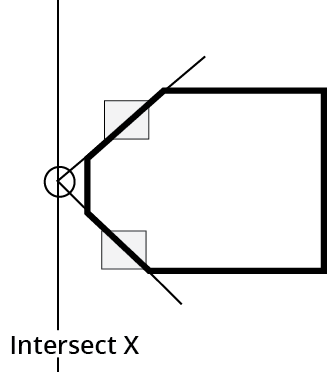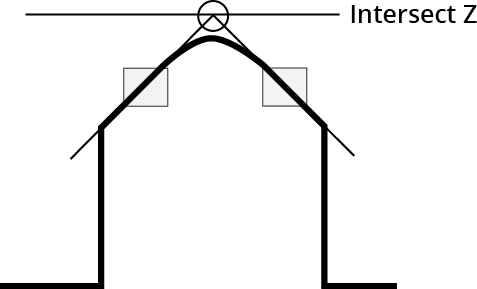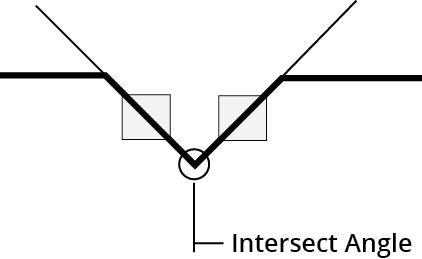Profile Intersect
The Intersect tool determines intersect points and angles.
The Intersect tool's measurements require two fit lines, one of which is a reference line set to one of the following:
- the X axis (z = 0)
- the Z axis (x = 0)
- a user-defined line
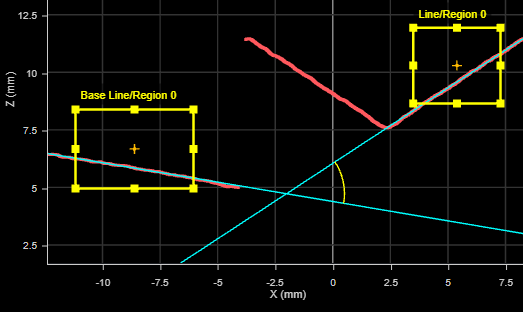
For information on adding, managing, and removing tools, as well as detailed descriptions of settings common to most tools, see Tool Configuration.
Inputs
You configure the tool's inputs in the expandable Inputs section.
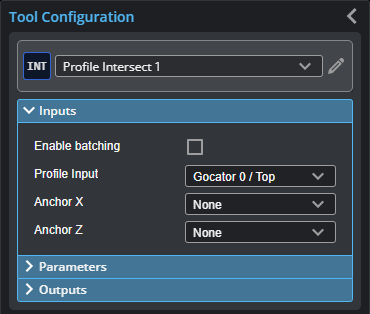

|
To use a measurement as an anchor, it must be enabled and properly configured in the tool providing the anchor. For more information on anchoring, see Measurement Anchoring. |
| Name | Description |
|---|---|
| Enable Batching |
For more information on arrays, batching, and aggregating, see Arrays, Batching, and Aggregation. |
|
Profile Input |
The data the tool applies measurements to or processes. This tool can optionally take an array as input. If Enable Batching is disabled and the passed array contains more than two elements, GoPxL displays an error. For more information, see Arrays, Batching, and Aggregation. |
|
Anchor X or Anchor Z |
The X or Z measurement of another tool that this tool uses as a positional anchor. Positional anchors are optional. |
Parameters
You configure the tool's parameters in the expandable Parameters section.
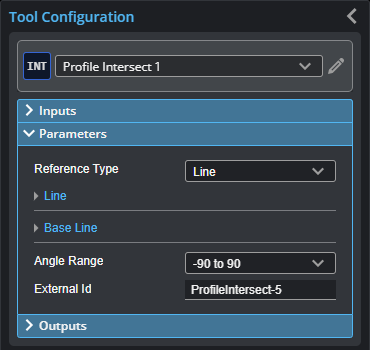
| Parameter | Description |
|---|---|
|
Reference Type |
Determines the type of the reference line. One of the following: X Axis, Z Axis, or Line. X-AxisThe reference line is set to the X axis.
Z-Axis: The reference line is set to the Z axis.
Line: You define the reference line manually using the parameters in the Base Line section. You can define the line using one or two regions. |
|
Line |
You can use one or two fit areas for the fit line. To set the region (or regions) of the fit line, adjust it graphically in the data viewer, or expand the feature and enter the values in the fields. For more information on regions, see Regions. For more information on fit lines, see Fit Lines. |
|
Base Line |
Used to define the reference line when the Reference Type parameter is set to Line. For more information on regions, see Regions. For more information on fit lines, see Fit Lines. |
|
Angle Range |
Determines the range returned by the Angle measurement. One of the following: -90 – 90 0 – 180 |
|
External ID |
The external ID of the tool that appears in GoHMI Designer. For more information, see GoHMI and GoHMI Designer. |
Outputs
All tools provide measurements, geometric features, or data as outputs.
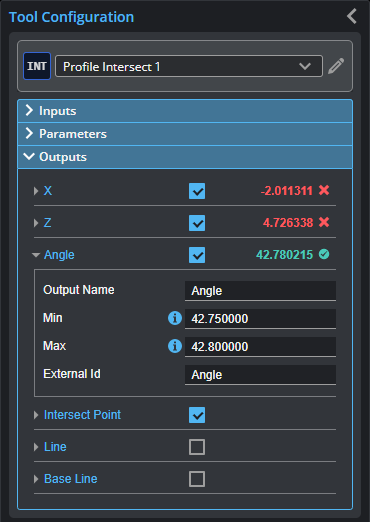
Outputs section with a measurement expanded to show user-configurable decision min/max fields and an external ID
You configure the Min and Max parameters by expanding the measurement in the Outputs section. In order for a measurement to return a Pass decision, the measurement must be between maximum and minimum values; the range is inclusive.
| Measurement | Illustration |
|---|---|
|
X Finds the intersection between two fitted lines and measures the X axis position of the intersection point. |
|
|
Z Finds the intersection between two fitted lines and measures the Z axis position of the intersection point. |
|
|
Angle Finds the angle subtended by two fitted lines. |
|
| Type | Description |
|---|---|
| Intersect Point |
The point of intersection. |
| Line |
The intersect line. |
| Base Line |
The base line. |

|
For more information on geometric features, see Geometric Features. |
